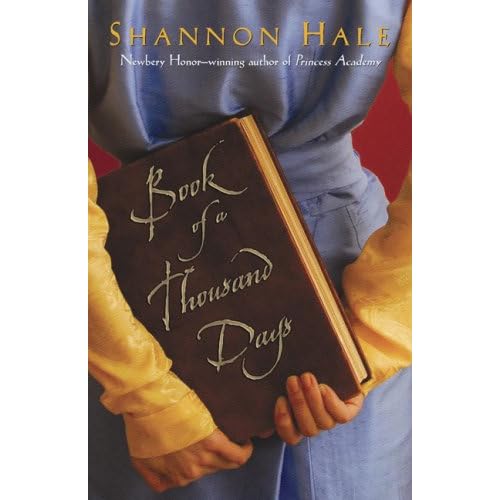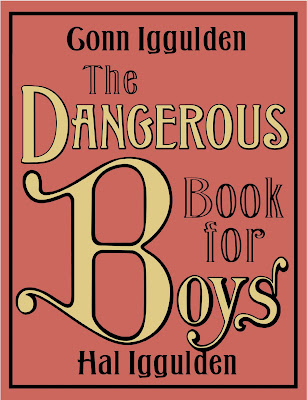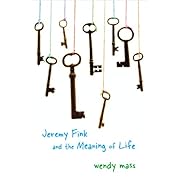Viewing: Blog Posts Tagged with: Teen, Most Recent at Top [Help]
Results 26 - 32 of 32
Blog: Deliciously Clean Reads (Login to Add to MyJacketFlap)
JacketFlap tags: Jeremy Fink and the Meaning of Life, Wendy Mass, teen, Add a tag
Blog: Deliciously Clean Reads (Login to Add to MyJacketFlap)
JacketFlap tags: adult, Shannon Hale, teen, Book of a Thousand Days, Austenland, Add a tag
I didn't get a chance to blog about Shannon Hale yesterday, because I was too busy driving out to meet her. Yesterday, she spoke and signed books at All Tucked In in the Salt Lake area. This was the second time I had the opportunity to hear her and have books signed (you can read about the first here).
Yesterday, Shannon told us about her two latest books, Austenland and Book of a Thousand Days (reviewed here). Following will be my notes from yesterday.
In 1996, the world changed. Do you know what happened? The BBC version of Pride and Prejudice was released on VHS. (Some of you young people probably don't even know what that is....) Shannon was first exposed to the movie when her little brother was supposed to read the book for high school. Although Shannon loved the book, her brother got caught up on words like "clergy" and wasn't really seeing the magic of it all. So, they sat down to watch, along with Shannon's boyfriend (who later became her hubby). She didn't understand why the movie made her feel sweaty and nervous. She only hoped the boys wouldn't notice. After a couple hours, the guys went outside, and Shannon, saying she wanted to rest, stayed in to finish the movie...and then re-watch the best parts.
Upon talking to some friends, she found that she wasn't alone in her love of the movie. One friend in particular had to ground herself from Pride and Prejudice, get it out of the house even.
Because of Shannon's past in acting, she thought about how fun it would be to go to a place where she could be immersed in the world of Jane Austen. So she wrote the book.
Austenland is the story of Jane Hayes, who is completely obsessed with Mr. Darcy, and more specifically, Mr. Darcy as played by Colin Firth. Just making sure you're still awake...
Just making sure you're still awake...
Anyway, Jane's Great-Aunt dies and leaves her an all-expense paid to Austenland. Jane decides to use it as one last obsessive act, and drop her beloved BBC addiction forever...but, on her dream vacation, will she find a Darcy of her own?
When Shannon wrote Austenland, she kept showing it to her first test audience, her supportive husband. For five years, she worked on it, and he wasn't too impressed. Finally, she realized he really wasn't the ideal audience, published it, and the rest is history, as they say.
Book of a Thousand Days is loosely based on a Grimm Brothers fairy tale called Maid Maleen. She didn't choose to write the story because she loved it, she chose it because it made her want to slap the Grimm Brothers. After all, there was a maid locked into a tour with a lady for a very long time, and she hardly got any attention in the original tale. In fact, the Grimm Brothers completely dropped her halfway through the story.
Shannon asked herself lots of questions about the 3 page story. Eventually, after lots of research, she knew it had the potential to be a full novel. A diary-style novel from the maid's point of view.
In researching, she found a few nuggets of gold. She discovered that Mongolians believed in strong powers of song, that when you hold someone close, you can smell the scent of their soul, and that the ultimate humiliating, debasing act is for someone to be in public without clothes on.
I suppose that's all I'm going to share. I recommend that if you ever have a chance to hear her speak, you take it.
After her speech, a long line formed to have books signed. I had THREE books signed for giveaways! A hardcover of Book of a Thousand Days, a softcover of Princess Academy, and a softcover of Goose Girl. She wrote a brief, unique message in each. Be sure to leave a comment (or many comments) on any of the Shannon Hale posts this week to be entered into the drawing. I will close the drawing at midnight MST on Sunday, November 11th. 3 winners will be announced Monday.
I had my ARC of Austenland signed. It was the first ARC I ever received, so I was happy to have the opportunity to have it personalized. When I told Shannon who I was, she stood up and hugged me. I was so flattered. In fact, I was so happy about the whole evening (except the fact that my kids knocked over her life-sized Mr. Darcy with an I Heart SH button on his lapel) that I actually dreamed I went to a museum with her and another LDS celebrity of sorts last night (I probably shouldn't have admitted that)...but don't worry, it's not an obsession...I promise.
And, if you are LDS and wondering who in the world went to a museum with us, it was...
...Random...
Blog: The Excelsior File (Login to Add to MyJacketFlap)
JacketFlap tags: graphic novel, teen, minx, castellucci, rugg, dc comics, Add a tag
by Cecil Castellucci and Jim Rugg Minx/DC Comics 2007 On a casual spring day in the big city Jane is suddenly thrown to the ground when a bomb in a nearby trash can goes off. In the wake of this her parents decide to move out of the city and into the safety and peace of the suburbs. Jane's fish-out-of-water attempts to fit in at her new school are coupled with her desire to create something
Blog: The Excelsior File (Login to Add to MyJacketFlap)
JacketFlap tags: summer, non-fiction, middle grade, short stories, anthology, teen, vonnegut, summer reading, rylant, collection, bradbury, peck, Add a tag
Warm weather, the dog days of summer, time to break out the shorts. Nothing more refreshing and cooler than lounging about, unencumbered, with plenty of free time to lounge and let the mind flicker an wander. The perfect time to snack on short stories and other collected short works. I am opening this one to the floor because while I feel I could cover this topic myself I've found myself more
Blog: The Excelsior File (Login to Add to MyJacketFlap)
JacketFlap tags: poetry, non-fiction, middle grade, boys, teen, iggulden, dangerous, Add a tag
 by Conn Iggulden and Hal Iggulden
by Conn Iggulden and Hal Iggulden
HarperCollins 2007
Do not be fooled into believing this is a cute title appended to a harmless book. This book is for boys and it is dangerous. Here is your proof, from the tiny type on the copyright page:
Note to parents: This book contains a number of activities which may be dangerous if not done exactly as directed or which may be inappropriate for young children. All of the activities should be carried out under adult supervision only. The authors and publishers expressly disclaim liability for any injury or damages that may result from engaging in the activities contained in this book.
In other words: If you have a boy, be a parent and raise them in ways that make legal disclaimers like this unnecessary.
Seriously though, boys by their very nature are curious and like to explore their world on their own terms. Yes, parental supervision is good, but so is a boy who knows how to cautiously explore the edges of his abilities. It can be a great thing for a boy and a parent to bond over, say, the building of a tree house or a go-cart but it is a greater joy for a boy to go out and learn how to master his own world.
This book is an update of the kind of American Boy's Handy Book that was published at the turn of the century, and much of what is in here wouldn't have been out of place a hundred years ago. Here's a sampling from the table of contents:
- The seven wonders of the ancient world
- Five knots every boy should know
- Making a bow and arrow
- Famous battles
- U.S. Naval flag codes
- Navajo code talker's dictionary
- Understanding grammar
- Girls
- Making cloth fireproof
- Secret inks
- Navigation
- The Declaration of Independence
- Dog tricks
- Coin tricks
- Seven poems every boy should know
- How to play poker
- A brief history of artillery
- The Ten Commandments
- Common trees
- Five pen-and-paper games
- The game of chess
- Books every boy should read
- growing sunflowers
I have a couple of favorite little things about this book. First, it begins with a list of essential items a boy should have. A pocket knife is first, and the book is modern enough to point out that pocket knives can still be carried on checked luggage at the airport. A little further down the list a pencil and paper are recommended in case "...you see a crime and want to write down a license plate number or a description... or a shopping list." Just that someone out there is planting the seed of a child always having something to write on is enough to help spawn a more literate generation, or at least one that copies down the latest fart jokes they've heard.
A little further down the list is a magnifying glass "for general interest. Can also be used to start a fire." Exactly. Don't pretend we don't know why boys love these essential tools. Sure, the could try to make flameproof cloth and then try to burn it with a magnifying glass. They might even lob off one of their fingers in the process with a pocket knife. But, again, there is little to fear if they have been raised properly.
I have to admit, I was a little surprised by the selection of poems every boy should know. Most of these I was forced to memorize in the 7th grade and I can't say it was always a pleasant experience. Following each poem there is a paragraph explaining the poem and it's importance and provide an opportunity to help round out a boy's street education with something a little more refined. The poems?
IF by Kipling
Ozymandias by Shelley
Selections from Song of Myself by Whitman
Invictus by Henley
Vitae Lampada by Newbolt
The Road Not Taken by Frost
Sea-Fever by Masefield
Pretty deadly stuff for boys, perhaps even dangerous, no? Personally I'd have liked to see maybe a Robert Service poem, or something with a little swash and buckle. I have buried in the archives a book entitled Songs of Men and there's some sea chanteys and other rugged bits of verse that would have easily fit it. Maybe a cowboy ballad.
When my girls are a little older I'm probably going to let them have a go at this book as well. We'll build a tree house and make bows and arrows and catch bugs in old jars. After all, what might be dangerous for boys is perfectly harmless in the hands of a girl. That's probably the best way I can spin that.
Blog: Poetry for Children (Login to Add to MyJacketFlap)
JacketFlap tags: poetry, teen, youngadult, verse novel, Add a tag
 I tend to focus more on children, rather than young adults, in my work (often a blurry distinction), but today I’d like to highlight a brand new occasion, Teen Literature Day. Poetry may well be the most ageless of all genres, in that all kinds of poems can be shared with all ages of children. There are some poets, however, who have particularly addressed the issues and concerns more pressing to the adolescent audience. This includes the narrative poems of Mel Glenn, the varied anthologies compiled by former English teacher Paul Janeczko, the writing of Ralph Fletcher, and individual titles by people like Tupac Shakur. There are many collections of poetry available specifically for teen readers, including notable anthologies gathered by Ruth Gordon, Liz Rosenberg, Patrice Vecchione, Naomi Shihab Nye, Betsy Franco, and more. And of course many teens enjoy adult poetry, classics, and poetry Web sites. But one of my favorite sources of appealing contemporary poetry for young adults is the novel-in-verse or verse novel, a form particularly popular with young readers in middle and high school.
I tend to focus more on children, rather than young adults, in my work (often a blurry distinction), but today I’d like to highlight a brand new occasion, Teen Literature Day. Poetry may well be the most ageless of all genres, in that all kinds of poems can be shared with all ages of children. There are some poets, however, who have particularly addressed the issues and concerns more pressing to the adolescent audience. This includes the narrative poems of Mel Glenn, the varied anthologies compiled by former English teacher Paul Janeczko, the writing of Ralph Fletcher, and individual titles by people like Tupac Shakur. There are many collections of poetry available specifically for teen readers, including notable anthologies gathered by Ruth Gordon, Liz Rosenberg, Patrice Vecchione, Naomi Shihab Nye, Betsy Franco, and more. And of course many teens enjoy adult poetry, classics, and poetry Web sites. But one of my favorite sources of appealing contemporary poetry for young adults is the novel-in-verse or verse novel, a form particularly popular with young readers in middle and high school.
Here’s a helpful description from Tasmania, of all places:
“This contemporary genre combines the power of narrative with the rich, evocative language of verse. Of course, some verse novels contain ordinary verse and little plot, but the best free verse novels are beautifully crafted, convincing reading experiences with a strong sense of voice. Although the narrative structure of a verse novel is similar to a prose novel, the organisation of story is usually in a series of short sections, often with changing perspectives. Verse novels are often told with multiple narrators, providing readers with a cinematic view into the inner workings of characters’ minds. Most verse novels employ an informal, colloquial register.”
One could view today’s verse novel as the contemporary offshoot of the ancient epic poem, a lineage including Chaucer’s Canterbury Tales and even Tennyson’s Idylls of the King. Victorian verse novels for adults evolved to compete with the mass market appetite for novels in mid-1800’s with novels generally earn more than poetry. Nilsen and Donelson cite Mel Glenn’s first book, Class Dismissed! (1982) as a ground-breaking verse novel for it’s “candid, first-person speech to discuss intense situations” (Literature for Today’s Young Adults, 2001, p. 299). Here’s a sampling of 10 of my favorite verse novels for young people:
Creech, Sharon. Love that Dog
Frost, Helen. Keesha’s House
Glenn, Mel. Split Image
Herrick, Steven. The Simple Gift
Hesse, Karen. Out of the Dust
Koertge, Ron. The Brimstone Journals
Nelson, Marilyn. Carver, A Life in Poems
Sones, Sonya. Stop Pretending: What Happened When My Big Sister Went Crazy
Wayland, April Halprin. Girl Coming in for a Landing
Wolff, Virginia Euwer. Make Lemonade
+ Grimes, Nikki. Bronx Masquerade (a blending of narrative and poetry)
Each of these authors has other verse novels worth checking out, too. It can also be very engaging to read these works out loud in parts, with different readers voicing different characters. Minimal preparation, maximum dramatic effect.
Picture credit: www.swest.k12.in.us
Blog: The Hip Librarians' Book Blog (Login to Add to MyJacketFlap)
JacketFlap tags: book, susan, trigger, vaught, teen, Add a tag
Seventeen year old Jersey Hatch is coming home. Having spent the better part of the last year of his life in the hospital and then at a rehabilitation center
Add a Comment




As a middle-grader, my daughter was obsessed with short stories pulled from James Herriot's books. (All Creatures Great and Small, etc.)Short stories for older teens: Connie Willis. Impossible Things has "Even the Queen" (best funny SF story ever about teenage girls and their periods) and "The Last of the Winnebagos" an environmental suspense story. FireWatch has the award-winning title story